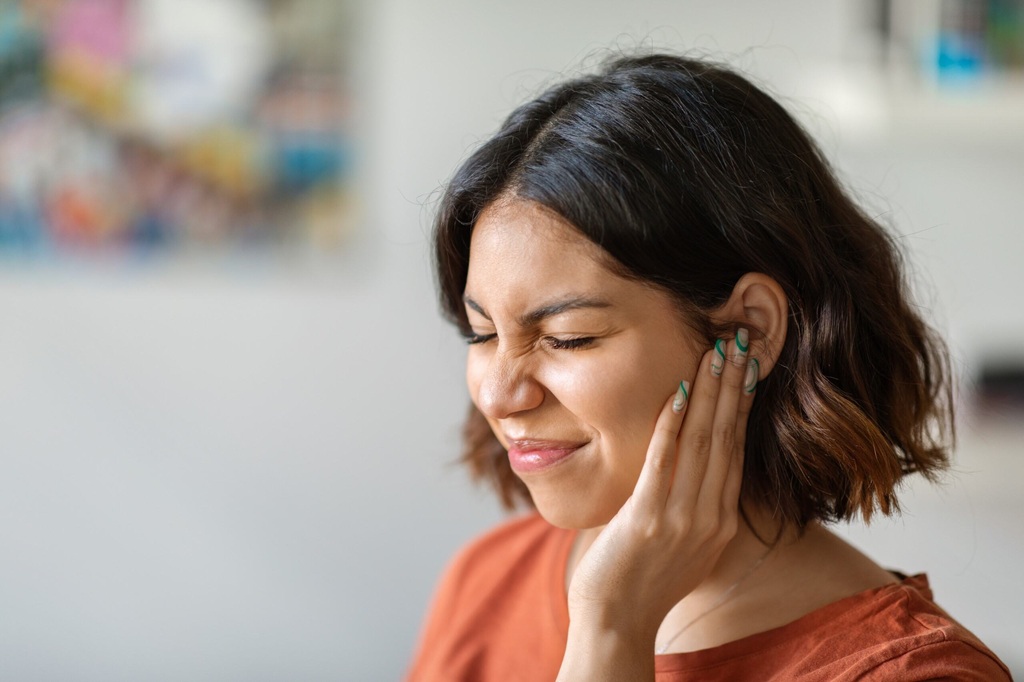Ear pain in winter is common due to cold weather, dry air, and sinus issues. It can be caused by various factors like cold, infections, and blocked sinuses.
Managing ear pain typically involves:
Whether it’s a sharp ache or a dull throb, dealing with ear pain in winter can be frustrating. Since taking preventive measures can help reduce the risk, it is necessary to know the reasons for ear pain in winter.
In this article, we’ll explore why winter brings about these discomforts, the common causes behind it, and practical tips for managing and preventing ear pain during the colder months.

Winter weather often leads to ear pain due to cold, as the drop in temperature and the exposure to dry, chilly air can cause the ear canals to constrict or become irritated. This makes it easier for bacteria or viruses to enter the ear, leading to infections.
When you catch a cold, ear pain due to cold is a common issue, often linked to congestion and inflammation in the ear and surrounding areas.
The Eustachian tube, which connects your middle ear to the back of your nose and throat, plays a key role in maintaining ear health. It helps regulate air pressure and prevent fluid build-up in the ear.
However, when you have a cold, excess mucus from your nose can block the Eustachian tube. This obstruction causes ear discomfort and the sensation of a ‘plugged’ or full ear. Thankfully, this type of ear congestion typically improves as the cold clears, though it can sometimes lead to further complications.
A middle ear infection is a frequent result of a cold, occurring when viruses or bacteria from the throat and nose travel into the ear via the Eustachian tube. This can lead to fluid collection in the middle ear, where it may become infected, leading to pain and possible hearing issues. Additional symptoms may include swelling, redness, fever, and thick nasal discharge.
If a cold lingers, it can sometimes progress into a sinus infection, also known as sinusitis. This condition involves inflammation in the sinuses, which are located in your nose, forehead, and around the eyes. The pressure from sinusitis can cause discomfort in the ears, contributing to ear problems in winter.
Other symptoms may include nasal congestion, facial pain, headache, fever, and a reduced sense of smell.
Winter-related ear pain can present itself in several ways:
If these symptoms continue or worsen, it may indicate an infection or other ear-related issues.
If you’re dealing with ear pain in winter, here are some simple remedies to help ease the discomfort:
While you may not be able to control the weather, there are steps you can take to prevent earaches during the colder months:
If your ear pain persists for more than a few days, or if you experience severe pain, fever, or fluid drainage, it’s time to consult a specialist. Prolonged or intense ear pain due to cold could indicate an ear infection or other underlying condition that requires medical treatment. Visiting an ENT in time ensures you receive timely care for your ear problems.
If you’re experiencing ear, nose, or throat issues, it’s essential to consult the Best ENT Specialist in Bangalore for accurate diagnosis and treatment. With their expertise, you can ensure that your symptoms are properly addressed, leading to effective care and recovery. Don’t compromise on your health—seek out the best specialists for optimal results and relief from ENT-related problems.
For ongoing or severe symptoms, seeking professional help at the best ENT Hospital in Bangalore can ensure prompt and effective treatment, offering you the best chance for a quick and comfortable recovery.
To reduce the risk of ear infections during cold weather, keep your ears warm by wearing a scarf, hat, or earmuffs when outdoors. Staying hydrated also helps keep mucus thin, reducing the chances of congestion. Avoid exposing yourself to cold drafts, and practise good hand hygiene to minimise the risk of catching a cold.
You can try using warm compresses on the affected ear to soothe discomfort and reduce inflammation. Staying hydrated and using a humidifier can help keep nasal passages and ears from becoming too dry. Over-the-counter ear drops for wax buildup may help, but check with a doctor (mainly ENT) first if there’s a chance of infection.
Sleeping on the side opposite the painful ear can reduce pressure and discomfort. Elevating your head with an extra pillow may also help relieve pressure in the ear, easing symptoms and making it easier to rest.
Categories: ENT
Ear Pain During Winter: Causes And Management is available for appointments. Please fill the below form to book an appointment.
Unlock the door to exceptional healthcare, book an appointment with SPARSH Hospital and let your journey to wellness begin.